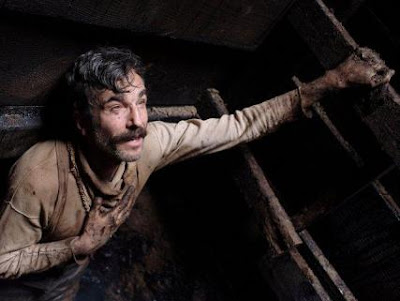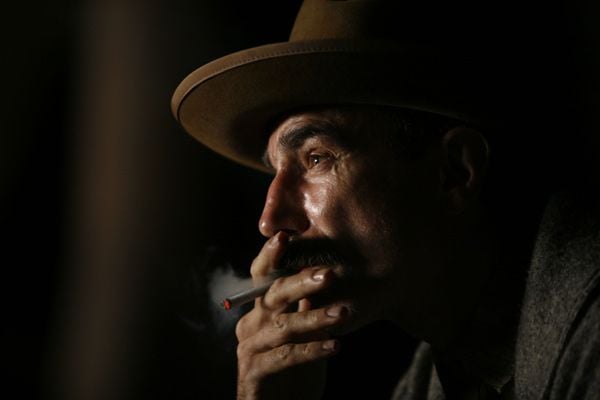by Miné Salkin | Apr 17, 2007 | books
In many human relationships, the emotional and psychological consequences of loss are extremely poignant. Much like psychoanalytic texts attempt to define the parameters of human emotion in the realm of loss, literature often portrays the subtle analysis of this delicate component of the human condition. In Marcel Proust’s work “The Intermittencies of the Heart,” the loss of a loved one encourages introspective action in regards to the specific components of loss which are most painfully felt, in the forms of recollection and involuntary memories. On the other hand, Franz Kafka explores the violence and indifference of a disease overcoming the emotions of conventional mourning in his work The Metamorphosis. Although the spectrum of affects as a result of loss are distinctly varied in the two works, they share many similarities with Melanie Klein’s theory of the depressive position, and the fear of loss which is embedded in every relationship. Ultimately, Proust and Kafka highlight many of the essential tenets of Klein’s psychoanalytic theory as the underlying forces behind each varied reaction to loss.
Melanie Klein’s methodological account of the depressive position is a complex theory which analyses human relationships based on the fundamental rift between external and internal objects. In mature relationships, Klein asserts that depressive anxiety stems from “generous and altruistic feelings that are devoted to the well-being of the object,”1 yet this is attained through a characteristic process of projective identification, the splitting of the object, and the partial idealization of the divided parts of the individual.
The concept of projective identification is the Freudian idea that in some cases, the process of self-identification is based on projection and introjection of the other. Although Klein references the infant and mother relationship as the impetus for the depressive position, these psychoanalytic phenomena occur in the adult characters created by both Kafka and Proust, which will be discussed shortly. Since the child depends on the mother’s breast for milk, and therefore survival, the breast is separated from the mother, and the splitting process has begun. According to Klein, there is a critical shift in the consciousness of the individual when they convince themselves that their mother is not the perfect, benevolent being they believed her to be, but rather a imperfect object. By this reasoning, hostile affects are produced, since the child now struggles with the goal of unifying the opposing qualities of their mother as a whole object.
Much of the hostility that resonates in Kafka’s The Metamorphosis is due to this fundamental rift between the internal and external conceptions of Gregor, and his family’s projections which no longer apply to their son. Since Gregor does not look like himself, but rather is trapped within the body of a large insect, the act of projection is a futile endeavor, since the internal and the external realms are confused. In this way, Kafka disguises the reality of loss by creating a graduated version of it; Gregor is still himself, but is found in the body of another being. For this reason, the family no longer sees Gregor as the whole object, but an imperfect one. Eventually, the transformation is so extensive that they treat his condition as a fatal disease, and react to the loss accordingly.
The theory of object relations is an equally integral analysis of the subconscious in which Kafka and Proust highlight, as both characters experience a similar analysis of internal and external parts from which projection and introjection react against. According to the Kleinian doctrine of the depressive position, concern for internal objects which are interjected into the ego of the individual gives rise to the anxiety they are susceptible to – the fear of the loss of the external object. In other words, external objects are subsumed internally by the individual who then “play[s] with these figures inside”2 themselves, creating a situation where they have introjected certain characteristics, or ideals of the person with whom they share a relationship. The individual feels emotionally invested and even dependent on the external object, because of the internalized values they have brought within themselves.
Although this idea is derived from Klein’s speculations of how the ordinary infant both despises and adores the mother’s breast from which he is fed, the depressive position maintains credibility in mature relationships as well. The argument that depressive anxiety stems from the fear “lest objects should die” is an extremely convincing tenet of Klein’s psychoanalytic theory, and is cogent in this investigation of the effects of loss in literary situations.
In Proust’s work, the pain of loss as a result of the influence of introjection are very clearly seen. The protagonist does not mourn for the pain his grandmother felt from her sickness, but instead is bombarded by the pain of his own loss. This is largely due to the introjection of his grandmother within himself, instilling the memory of her – the object of his loss. He admits to the reader that he “clung to the minute in which my grandmother had stooped over me. The self that I then was, that had disappeared for so long.”3
From this simple phrase, it can be argued that the introjection of his grandmother’s memory is an idealized internalization of not only his grandmother, but another version of himself which the memory invokes. In this way, the affect of mourning is triggered and maintained by the loss of the external object within the character’s ego, because his grandmother’s absence is directly linked to the internalization of her memory.
The balance of projection and introjection, then, is proceeded by the stage when the “ego maintains separation of the good and the bad in the object and in itself.”4 This is a dialectical idea which encourages the unification of the good and the bad objects within a relationship, to view the other as a whole object, not in parts. For our character in Balbec, the glimpses of his grandmother and the recollections he has does not seem to fit this psychoanalytic template perfectly. Rather than viewing his grandmother as a whole object, he remembers her imperfectly and incompletely, although his “involuntary recollection” is precise and detailed. For example, when bending over to remove his boots, he suddenly remembers her “tender, preoccupied, disappointed face,”5 and then elaborates on the pain of his sudden realization of loss.
Since the act of bending over to untie his boots provoked this recollection, Proust seems to suggest that there is a vicarious element to the art of mourning the death of a loved one. The Kleinian analysis of the effects of loss also agrees with this interpretation, since by definition the process of introjection and projection are extremely self-centered and self-engendered tendencies. This is very evident in Proust’s work, when the character admits that he only truly remembered his grandmother through his own pain,6 using his own, introjected ideals of his grandmother within himself. Similarly, he notes that “the dead exist only in us, it is ourselves that we strike without respite when we persist in recalling blows that we have dealt them.”7 This honest confession truly brings the depressive position into light, since our character reflects the same form of anxiety and pain in not being able to recall the memory of his grandmother as a whole object, but rather as an external object which he has introjected.
On the other hand, Kafka adopts a slightly different approach in his analysis of the role of introjection. For the Samsa family, Gregor’s transformation is handled like a debilitating disease which afflicts the family as a whole, and Kafka illustrates the disease at absurd lengths. By depicting the sick Gregor as a giant insect, different affects are produced than the tender, sentimental aches for Proust’s recollected grandmother. Rather than this alternative reaction to the loss of a loved one, Gregor’s family ostensibly becomes increasingly removed from the process of projective identification, since they no longer recognize him. According to Klein, the relationship between Gregor and his family exemplifies the destruction of the whole-object relationship, since “the good object that is lost is the internal object,”8 and Gregor no longer has the appearance of the internal object he once represented. Instead, the family reacts violently and without hope of recovery, because they are no longer able to identify him as a whole object within which they may project themselves into. For Kafka, the loss of Gregor is incomplete, since his family is unable to mourn accordingly by introjecting, and thus identifying with the “lost actual person,”9 because of the fundamental incongruity between the appearance the reality of Gregor’s body and personality.
For Proust, the recollection of the late grandmother recalls the questionable appearance and reality of a ‘phantasm’ – awakening from a receding dream. Similarly to the dynamics between Klein’s definitions of phantasy versus fantasy, these transcendental qualities found in both Kafka and Proust’s works, particularly in relation to the temporal framework that each text deals with. While Klein asserts that “unconscious phantasies” can result in violence and aggression, Kafka and Proust yield different affects.
For Kafka, the phantasy is grounded in the surrealist representation of Gregor’s dreaming and waking sequences; nearly all of Gregor’s transformations occur in his sleep. His reactions to his physical changes are manifested in his consciousness, which plays out like a fantasy in the narrative. For example, Gregor’s initial reaction to his metamorphosis does not immediately yield aggressive or violent affects, but rather involve the bewilderment of his new body, and his concern to return to work. While Gregor does not react according to the Kleinian description of the unconscious phantasy, his actions and adamant obligations to work “all the more harder and diligently”10 appear to have the texture of surrealist, dreamlike fantasies.
On the other hand, the fantastical aspects of Proust’s work are highlighted by the complex narrative, and the manipulation of time. More specifically, the speaker relates all of the events of his visit to Balbec using a nexus between a distal account of the past, and his consciousness of the proximal events which he relates in past tense. The layering of memory upon memory structurally reinforces the Kleinian interpretation of the work, since the arrangement suggests a similar structure to the relationship amongst object relations. In other words, the constant building up of recollection, integrated into the narrative of the text is very similar to the notion of viewing things not as a whole, but in parts.
In many ways, Gregor’s body as the metamorphosis in the physical sense may be directly paralleled to the Kleinian schema of splitting and introjection. Furthermore, the physical aspects of Gregor’s metamorphosis may be considered literal applications of Klein’s theory of projective identification. Rather than an inherent hostility towards the physical changes of his body, Gregor’s quiet and introspective fascination with his new body thematically represents “the metamorphosis” as the developing ego which divides the unity of the individual. In other words, the changes in his body reflect the philosophical question of the duality of the body and the mind; Gregor evaluates the newfound changes with curiosity, as his metamorphosis bleeds together the realms of the internal and external objects of his new existence. For example, Gregor awakes at twilight and assesses his situation in an objective, unemotional tone: “still groping with his antennas, which he was only now learning to appreciate… he actually had to limp on his two rows of legs.”11 The deadpan, factual tone which Gregor adopts metaphorically represents the Kleinian doctrine of splitting – of Gregor from his own body. In this way, Gregor’s ego is in the process of dividing, but this division is made literal in view of the Kleinian interpretory framework.
According to Klein, the act of splitting, particularly involving the ego, can require support from projection and introjection, and can result in a character who is “depleted and rendered limp.”12 This is seen very clearly in Gregor’s attitudes towards his new body, which he eventually accepts as his own. As mentioned before, the split between his body and his mind is of fundamental significance, as it represents the conscious divide between the internal and external components of his identity. However, the lack of substantial changes in Gregor’s personality throughout the story reinforces the importance of the body in terms of self-identification, and the projected ideals of his character onto the expectations of his family. Before consuming his first meal of garbage, Gregor ponders whether or not he has become “less sensitive,”13 which directly relates to Klein’s theory that a divided character questions themselves due to the splitting of the ego. In this way, Gregor himself sees the problem in this division. While he still maintains the personality he has always had, the appearance does not support the reality of his new body.
While Gregor may be adapting to his new body without any apparent changes in his personality, the process of projective identification occurs through his family’s reaction of his metamorphosis. The violence and aggression are clearly exhibited by his family members, particularly the father, who are attempting to reconcile their idealized projections of Gregor, which fundamentally clashes with the reality of his newfound physical body. Although Kafka takes a very surrealistic path to explicate the possible reactions to loss, both writers appear to agree with Klein’s conditions for the depressive position in general, and the reality of introjections.
A similar account of clashing projections in the face of loss is also explored by our character in Balbec, who now realizes and understands his grandmother’s actions prior to her death. Once disappointed by her vanity in posing for a photograph, he now perceives the significance of this memory. While Gregor’s family loses hope of his recovery and acts out with threats and avoidance, the protagonist in Proust’s story mourns for the fact that he does not have the ability to ease the pain of the suffering she felt prior to her demise. In this way, Proust highlights one alternative to the process of mourning: “more than the sufferers’ own consciousness of their pain, they bring blind to that tragedy of their existence which pity sees.”14 In this way, both alternatives to the question of reparation are surfaced to the forefront. While Gregor’s family may represent the superego driving the subject through threats and punishment, Proust illustrates the concern to repair the loss of the object as “an act of love out of sadness.”15
While Klein maintains that aggression is the conventional manifestation of the concern for the loss of an introjected object, Herr Samsa ostensibly reflects this in a way that is both repulsive and intriguing. Gregor notes that from the first day of his transformation, his family no longer cared for him in the usual warm manner, but would “only tolerate”16 him. More evident reactions to Gregor’s transformation are his father’s violent acts of discipline, which illustrate the potential for violence after the loss of a loved one. For Kafka, the apple which rots in Gregor’s back serves as the metaphorical representation for the painful affects created by both introjective and projective acts. Since Gregor no longer appears to be son he once was, the father feels a sense of loss. The apple itself represents the pain of failed projections; the father has now assumed the role of provider, and Gregor is now devoid of any significance to the family.
Thus the relation between human beings and the suffering caused by the loss of a loved one vary because the range of emotions produced can be either aggressive or tender. As Kafka’s story is interpreted in the Kleinian psychoanalytic tradition of object relations, the object of loss is mediated by aggression and punishment, whereas Proust illustrates the sadness and vicariousness associated with the death of a loved one. Despite the different affects produced from loss, both writers examine the complexity of object relations, and the fear of loss which infiltrates the psychic reality of every individual, resulting in either hostility or a profound melancholy which can never be fully resolved.
Works Cited:
R.D Hinshelwood, “Depressive Position.” In A Dictionary of Kleinian Thought (Free Association Books, 1989)
Hinshelwood, Robert and Robinson, Susan. Introducing Melanie Klein. Cambridge: Icon Books UK, 1997.
Kafka, Franz. The Metamorphosis and Other Stories. Translator, Donna Freed. New York: Barnes & Noble Classics, 2003.
Proust, Marcel, “The Intermittencies of the Heart.” In Sodom and Gomorrah, volume IV of In Search of Lost Time (Modern Library, 1999). Translated by C.K. Scott Moncrieff and Terence Kilmarin, revised by D.J. Enright.
 Paul Thomas Anderson’s newest film is a gritty tale of jealousy, greed and revenge, set at the turn of the twentieth century when the American oil industry was just beginning.
Paul Thomas Anderson’s newest film is a gritty tale of jealousy, greed and revenge, set at the turn of the twentieth century when the American oil industry was just beginning.

